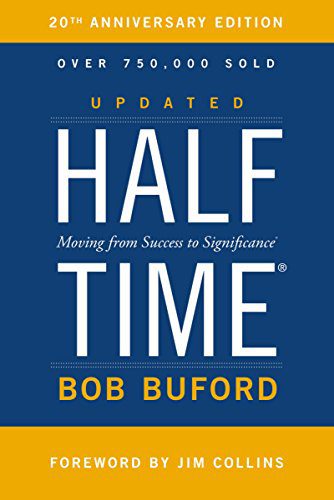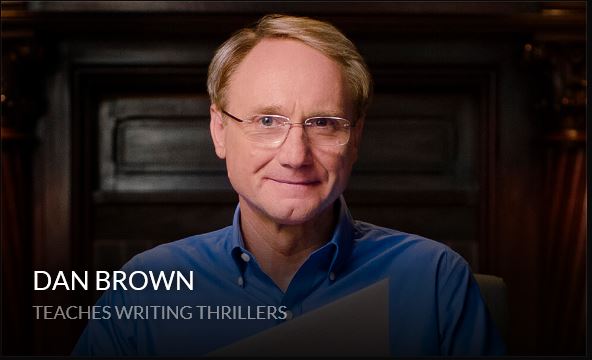If the first half was a quest for success, the second half is a journey to significance
Book Title: Halftime: Moving from Success to Significance
Author: Bob Buford (Author), Jim Collins (Foreword)
Print | Kindle (eBook) | Audiobook
Halftime by Bob Buford is a great book as it contains a lot of thought-provoking questions on transitioning from success to significance.
Here are my favourite take aways from reading Halftime by Bob Buford:
Halftime : Two halves Sport analogy of Life:
During the first half of your life, you probably did not have time to think about how you would spend the rest of your life. You probably rushed through college, fell in love, married, embarked on a career, climbed upward, and acquired a few things to help make the journey comfortable.
You played a hard-fought first half. You even may have been winning. But sooner or later you begin to wonder if this really is as good as it gets. Somehow, keeping score does not offer the thrill it once did. You may have taken some vicious hits. A good share of men and women never make it to halftime without pain. Serious pain. Divorce. Too much alcohol. Not enough time for your kids. Guilt. Loneliness. Like many good players, you started the half with good intentions but got blindsided along the way.
if you are approaching middle age — which can be anywhere from your late thirties well into your fifties — the very best years of your life lie ahead of you. Whatever success you are having will never completely fulfill you. A life of significance — of really mattering — is yours for the taking.
Even if your pain was slight, you are smart enough to see that you cannot play the second half as you did the first.
The real test of a man is not when he plays the role that he wants for himself, but when he plays the role destiny has for him.- Vaclav Havel
The First Half – Pursuit of Success
In the first half of life, there is barely enough time to go beyond second base. We are hunter-gatherers, doing our best to provide for our families, to advance our careers, and to pass our beliefs and values on to our children. In addition, for most men, and certainly a growing number of women, the first half finds us in our warrior mode. We need to prove to ourselves and others that we can accomplish something big, and the best way to do that is to become increasingly focused and intense.
During the first half, we too are pulled between the desire to be with our families and the adventure of trying to make it in our careers. Is it any wonder we do not hear that still, small voice calling us to something better? The first half of life has to do with achieving and gaining, learning and earning. The majority do this in the most ordinary of ways: getting an education, entering the workforce, starting a family, buying a house, earning enough money to provide for needs as well as a few wants, setting goals, and climbing toward them.
The Second Half – Drive for Significance – Half Time
The second half, when the pressure lets up, seems to be more the time when most people round second base and begin to do something about the faith they have developed.
The second half is riskier because it has to do with living beyond the immediate. It is about releasing the seed of creativity and energy that has been implanted within us, watering and cultivating it so that we may be abundantly fruitful. It involves investing our gifts in ser vice to others — and receiving the personal joy that comes as a result of that spending. This is the kind of risk for which entrepreneurs earn excellent returns much of the time.
Halftime cannot be a noisy place.
The first half is noisy, busy, almost frenetic. It is not that you do not want to listen for that still, small voice. It’s just that you never seem to have time to do it. Try to reconstruct your daily schedule from the past two weeks. Chances are, you will not even be able to remember what you did yesterday, let alone two pull out your calendar, however, you’ll discover why — you simply had so many things on your plate it would be impossible to remember them all.
it’s better to be lucky than smart
Halftime Drill
Answer the following questions to help you take stock of your first half as you prepare for a better second half. Be honest, and write down your answers:
1. What do I want to be remembered for? Write a description of how your life would look if it turned out just the way you wished.
2. What about money? How much is enough? If I have more than enough, what purpose do I serve with the money? If I have less than enough, what am I willing to do to correct that?
3. How am I feeling about my career now? Is this what I want to be doing with my life ten years from now?
4. Am I living a balanced life? What are the important elements in my life that deserve more time?
5. What is the primary loyalty in my life? 6. Where do I look for inspiration, mentors, and working models for my second half? 7. Peter Drucker said that two important needs are self realization and community. On a scale of 1 to 10 (10 being the highest), how am I doing in these areas?
Write your Own Epitaph
Bob recommends writing your own epitaph to help you begin to think about your second half. Here’s a question that will help you with the same goal:
If your life were absolutely perfect, how would it look to you?
What might you lose with all this gaining?
I had gone through life more or less comfortable with the idea that there are some things you know, some things you suspect, and some things you’re just never going to understand. No less an authority than Aristotle spoke to that when he said that the soul operates on two levels: the rational, which takes in what can be seen and measured, and the sphere beyond the rational, which defies human comprehension and belongs in the realm of the gods.
Don’t expect to solve all your first-half issues and plan for the second half in a few hours. For most people, halftime spreads out over several months, even years. But it will never happen if we don’t give it the time it deserves.
Be deliberate.
Halftime is more than putting your feet up and meditating. It’s more than time away to think, pray, and play. A successful halftime needs some structure. Set an agenda that will help you “walk” through the important issues.
The famous English poet John Donne once wrote,
No man is an island, entire itself; every man is a piece of the continent, a part of the main. . . . Any man’s death diminishes me, because I am involved in mankind; and therefore never send to know for whom the bell tolls; it tolls for thee.”1 Allow yourself to listen for the bell. And before it tolls for you, allow it to be your wake-up call.
Be honest.
Some people make the mistake of using halftime to fantasize, wistfully projecting various images of themselves into unrealistic situations that will never happen. In any other setting it’s called daydreaming, and it’s not a bad thing to do on your way home from work. But getting ready for a better second half is not daydreaming. You need to honestly face the tough, nittygritty questions
Be patient.
It took you the better part of two decades to reach this point. You can’t undo everything overnight. You will still have to go to work tomorrow. Bills will arrive in the mail. Clients will expect to have their calls returned. And a clear picture of what you should do with the rest of your life may not emerge anytime soon — or may not emerge at all
All the Best in your quest to get better. Don’t Settle: Live with Passion.



1 Comment
With respect !!!